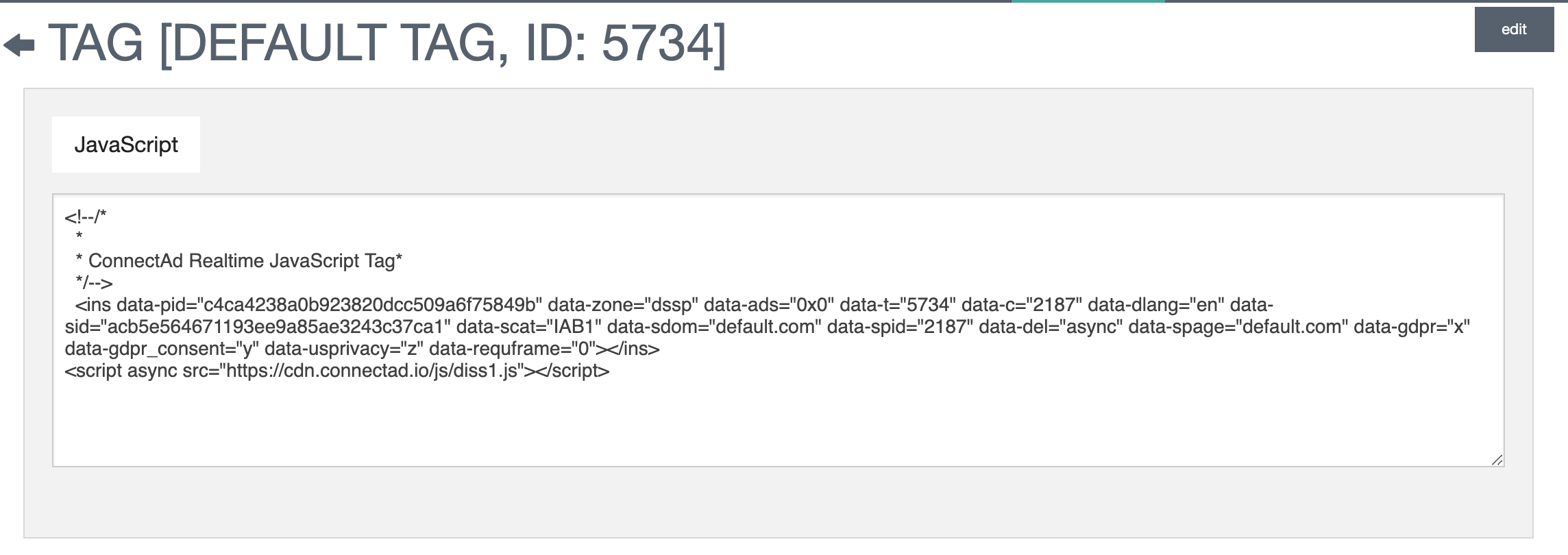JS-Display-Tags
Java Display Tags
Simply put, you can state that with synchronous loading, page elements are loaded in a 'serialized' way. By default, synchronously loaded JavaScript files block page render and waits for the file to be downloaded entirely and executed. While we may speak of a delay in terms of 100-300 ms, it's important to consider that Google sees a difference and your audience, who may experience a slight delay in page loading. On the other hand, asynchronous loading does not block page render and allows the browser to continue load elements while the JS file is being downloaded. This significantly speeds things up, especially when the JS file is loaded from a remote server.
ConnectAd works on async mode only out of the box. Due to backward compatibility, we've built a customized solution to render your passback on-demand in an iFrame to ensure functionality.
Please contact ConnectAd's support team if you have any concerns regarding your passbacks.
❗️ConnectAd Tag as Passback
Please don't use ConnectAd Java Display Tags as Passback-Tags for ConnectAd Tags. This will lead to an unwanted behavior and error messages. Use our Multi-Size functionality to call multiple sizes instead of internal passbacks.
How to get Async-ConnectAd Codes?
Your can find async-placement codes right in your ConnectAd Dashboard. Please navigate to Inventory Management -> Tags. The iFrame Tag is the right one for you.
Tag-Example:
Text
<!--/*
*
* ConnectAd Realtime JavaScript Tag*
*/-->
<ins data-pid="c4ca4238a0b923820dcc509a6f75849b" data-zone="dssp" data-ads="300x250" data-t="5734" data-c="2187" data-dlang="en" data-sid="acb5e564671193ee9a85ae3243c37ca1" data-scat="IAB1" data-sdom="default.com" data-spid="2187" data-del="async" data-spage="default.com" data-gdpr="x" data-gdpr_consent="y" data-usprivacy="z" data-requframe="0"></ins>
<script async src="https://cdn.connectad.io/js/diss1.js"></script>
Passing paramater
Parameters are added to the tag so that the tag can pass dynamically basic information to the DSPs for the bidding process to take place. Example parameters could include the domain and page of the inventory, or all the app relevant data, or the relevant video player settings.
If parameters are not filled in correctly or appended, you risk losing traffic or being blacklisted due to inaccurate information when working with DSPs.
Find below a list of all possible Macros, Parameters, and custom groupings.
Parameter | Usage | Mandatory |
|---|---|---|
pid=[id] | ConnectAd Publisher ID. User for an adrequest for a specific placement | Yes |
data-zone=[value] | Required identifier | Yes |
ads=[value] | Requested main creative size like 300x250 | Yes |
t=[number] | TagId | Yes |
c=[number] | Channel ID | Yes |
dlang =[value] | Language of the website | Yes |
sid=[value] | SiteID | Yes |
del=[value] | Delivery Mode | Yes |
scat=[value] | Website IAB-Category | Yes |
spid=[number] | ads.txt seller ID | Yes |
sdom=[value] | Domain from where this ad-call is coming from | Yes |
spage=[value] | Page from where this ad-call is coming from | Yes |
gdpr=[value] | Flag for GDPR 1 for given consent, 0 no consent, 2 no consent required. If the parameter is not present or "x" we will automatically try to determine the consent status | No |
gdpt_consent=[value] | The TCF 2.0 Consent-String. When present, it contains the data structure developed by the GDPR Consent Working Group. If the parameter is not present or "y" we will automatically try to determine the consent. | No |
us_privacy=[value] | Specifies whether US privacy laws (for example, CCPA) apply or don't apply to the user in the bid request. This field contains four characters. For example, 1YYN. | No |
requframe=[number] | Specifies whether the passback should be delivered in an iframe (1) or as an async ins (0). | Yes |

